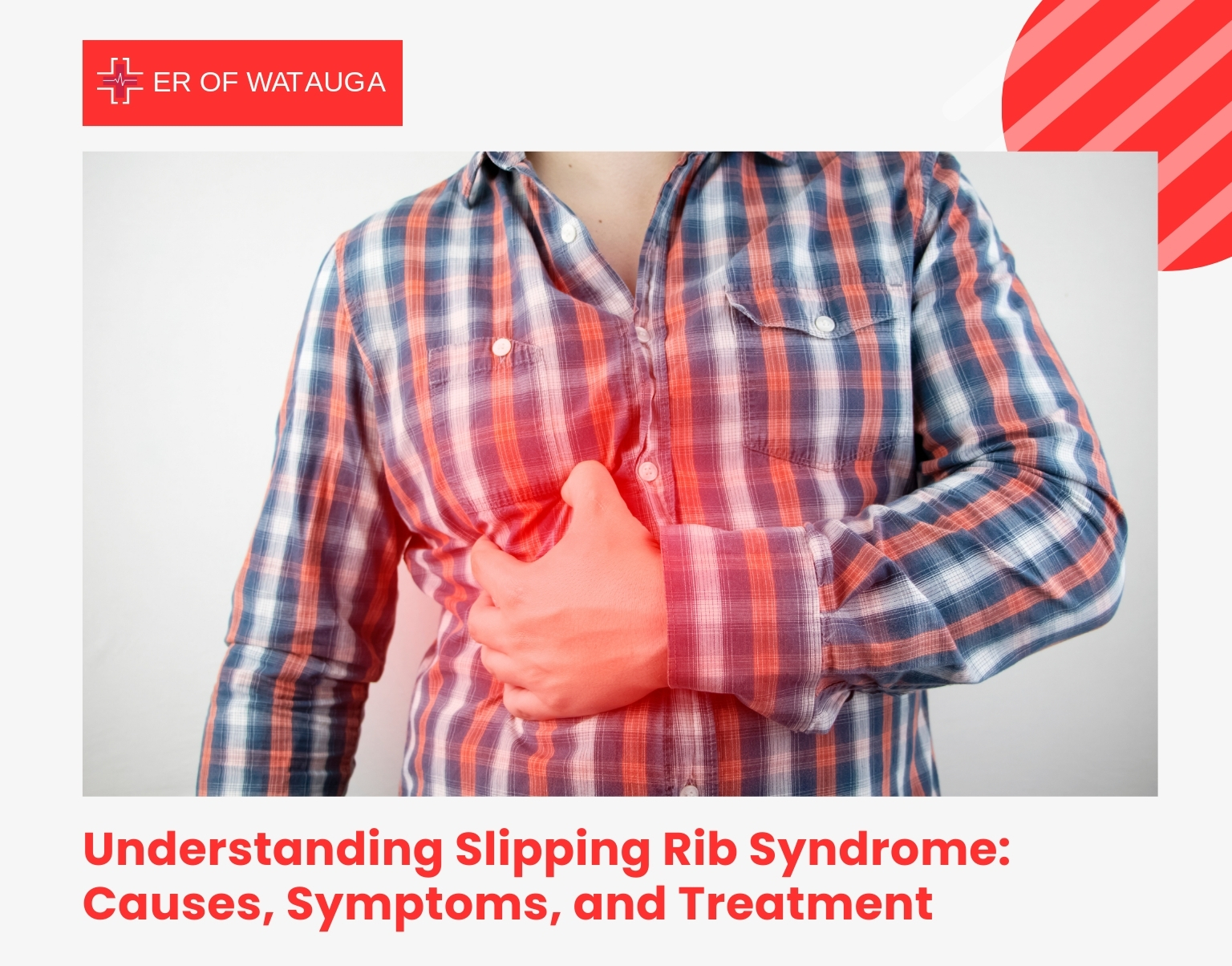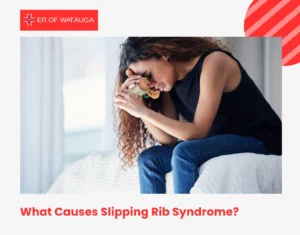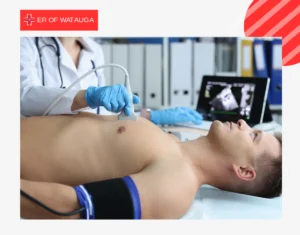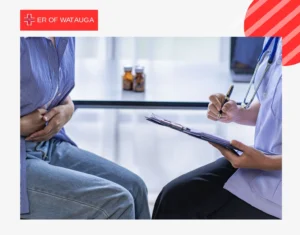Slipping rib syndrome, also known as clicking rib syndrome or rib tip syndrome, occurs when the lower ribs (typically the 8th, 9th, or 10th ribs) become too loose or move too much.
These ribs are called “false ribs” because they don’t attach directly to the breastbone (sternum) but are connected to the ribs above them by cartilage. When this cartilage becomes unstable, the ribs can slip out of place, causing pain.
How common is this?
This condition is rare but can be very painful, often leading to confusion because its symptoms can mimic other health issues like heart problems or gallbladder disease.
Research suggests it affects people of all ages, from children as young as 7 to adults in their 80s, and occurs in both men and women.
What Causes Slipping Rib Syndrome?
The exact cause of slipping rib syndrome isn’t always clear, but several factors can trigger it:
- Trauma: Injuries to the chest, such as from contact sports, car accidents, or falls, can damage the cartilage or ligaments that hold the ribs in place (Cleveland Clinic).
- Repetitive Strain: Activities that involve repeated twisting or bending of the torso, like certain sports or manual labor, can weaken the cartilage over time.
- Congenital Factors: Some people may be born with weaker cartilage or structural differences in their rib cage, making them more prone to this condition.
What are the Symptoms of Slipping Rib Syndrome?
The most common symptom is pain in the lower chest or upper abdomen. This pain can be:
- Sharp and stabbing
- Intermittent or constant
- Worsened by movement, coughing, or deep breathing
Some people also notice a clicking or popping sensation when the ribs move. The pain might spread to the back or shoulder and can sometimes be mistaken for other conditions like gallbladder disease or even heart issues.
Common Symptoms of Slipping Rib Syndrome
Symptom |
Description |
| Pain Location | Lower chest or upper abdomen |
| Pain Type | Sharp, stabbing, or dull |
| Pain Triggers | Movement, coughing, deep breathing |
| Additional Symptoms | Clicking or popping sensation, pain radiating to back or shoulder |
Diagnosis
Diagnosing slipping rib syndrome can be tricky; however, doctors may use several methods to confirm it:
- Physical Exam: A doctor might perform the “hooking maneuver,” where they hook their fingers under the lower ribs and pull them outward. If this reproduces the pain, it’s a strong indicator of clicking rib syndrome.
- Imaging Tests: X-rays, CT scans, or MRIs can help rule out other causes of pain, though slipping rib syndrome often doesn’t show up clearly on these tests.
- Dynamic Ultrasound: This is a newer and highly accurate method, with studies showing it can diagnose with about 89% accuracy.
Because the condition is often underdiagnosed, it’s important to see a healthcare provider familiar with slipping rib syndrome if you suspect you have it.
Treatment Options
Treatment for slipping rib syndrome includes:
- Pain Management: Over-the-counter pain relievers can help reduce pain and inflammation.
- Physical Therapy: Exercises to strengthen the muscles around the ribs and improve posture can be very helpful.
- Surgery: If other treatments don’t work, surgery might be needed to remove or stabilize the affected rib cartilage. This is typically a last resort due to its invasiveness.
Latest Treatment Advancements
In recent years, there have been exciting developments in treating slipping rib syndrome. In 2020, Dr. Adam J. Hansen developed a non-invasive treatment that uses sutures to correct the slipped rib without removing it. This procedure can be done in under an hour and offers lasting pain relief while preserving the lower ribs, which are important for supporting breathing (United Hospital Center).
Patients who have undergone this treatment have reported significant pain reduction up to 85% after the first month and nearly 100% after six months. This is a major improvement over traditional surgeries, which often involved removing the affected rib and could lead to complications like breathing difficulties later in life.
Remember: If you think you might have slipping rib syndrome, don’t ignore the pain. Talk to your doctor for a proper diagnosis or visit the nearest emergency room.
FAQs
What is slipping rib syndrome?
Slipping rib syndrome is a rare condition where the lower ribs (usually the 8th, 9th, or 10th) become loose and slip out of place. This can cause sharp pain in the chest or upper abdomen, often with a clicking or popping sensation.
What causes slipping rib syndrome?
It can be caused by Injury, Repetitive movements, or Congenital factors. Sometimes, the cause isn’t clear, which can make diagnosis tricky.
What are the symptoms of slipping rib syndrome?
Common symptoms include:
- Sharp or stabbing pain in the lower chest or upper abdomen.
- A clicking or popping feeling when moving.
- Pain that worsens with movement, coughing, or deep breathing.
- Pain that may spread to the back or shoulders. Symptoms can mimic other conditions like heart or gallbladder issues, so seeing a doctor is important.
How is slipping rib syndrome diagnosed?
Doctors often use Physical exam, Imaging, and Injections.
How is slipping rib syndrome treated?
Treatment depends on severity and may include Pain relief, Physical therapy, Injections, and Surgery.
Can slipping rib syndrome go away on its own?
In some cases, mild symptoms may improve with rest, avoiding triggering activities, and home remedies like ice or heat. However, persistent or severe pain often needs medical treatment, such as physical therapy or, in rare cases, surgery.
Is clicking rib syndrome dangerous?
It’s not life-threatening, but it can significantly affect quality of life due to pain and discomfort. If untreated, it may lead to chronic pain or complications from misdiagnosis.
Who is at risk for slipping rib syndrome?
Athletes, people with injuries, or those with flexible joints or weak cartilage.
When should I see a doctor for slipping rib syndrome?
For persistent chest/abdominal pain, clicking ribs, or pain with movement/breathing.











